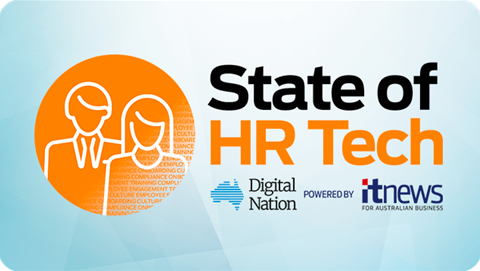Job stability has made its way into the top 10 drivers of work desirability according to a recent Gartner Global Talent Monitor.

The Global Talent Monitor by the technological research and consulting firm collected data from October and December 2023, surveying over 6000 employees in 40 countries, including 854 in Australia.
In Australia, findings also found employees’ intent to stay with their employer increased to 37.8 percent from 35.4 percent in the third quarter of 2023.
The report also found discretionary effort declined from 17.5 percent to 16.5 percent.
Less than one-quarter (24.3 percent) of Australian employees consider themselves to be ‘highly’ engaged despite engagement levels remaining steady across the year, according to the survey.
Around 73.9 percent of employees stated they are only ‘somewhat’ engaged in their work.
Neal Woolrich, director for HR Advisory in the Gartner HR practice told Digital Nation, “One of the most interesting findings is that stability has entered the top 10 drivers of attraction for what Australian employees look for in their job.”
“Fatigued workers have indicated they want to sit tight in their current roles, rather than seeking new employment opportunities.
“In fact, we continue to hear about instances of ‘boomerang’ employees returning to their former workplace because the grass simply wasn’t greener,” Woolrich said.
Woolrich said over the last few years employees have “been faced with some pretty significant changes in the workplace, particularly return-to-work mandates and technology disruptions, leading to change fatigue.’
“When combined with the rising cost of living and a softening labour market in Australia, employees are taking a far more cautious approach to their next career move,” Woolrich said.
With “discretionary effort”, an employee’s willingness to go above, now dipping workplaces must address “fatigue and foster engagement.”
“The impacts of change fatigue are felt across an organisation, from board level, right through to frontline workers, and the effects can be significant.
“Neglecting concern and care for employees negatively impacts talent outcomes and inhibits organisations from meeting their customer and business needs,” Woolrich said.
Woolrich added if things like “work friction and fatigue” are not marked early, “these challenges can lead to major organisational problems for leaders to navigate, including disengagement, greater absenteeism, slumping performance and unwanted turnover, not to mention a stunting of business growth.”
Warning signs
He suggested there is a myriad of possibilities for burnout “including workload and support volumes, low levels of connectedness, limited autonomy or recognition, an increased perception of unfairness and misaligned values.”
“As symptoms can build over time, leaders and managers should focus on learning about their employees and watching for subtle changes in behaviour, such as a decline in self-confidence, an increase in health and wellness issues or an obsession with small work problems.”
“There is a really important role here for leaders and managers to understand the signs and symptoms of individual employees and be aware of their fight-or-flight responses to stress and fatigue to prevent further issues or challenges.
“This includes educating everyone about how to recognise the symptoms of burnout, and where appropriate, to spot the warning signs in others.”
He explained that by “building psychological safety, providing a clear framework for decision making and encouraging upward and downward goal visibility and alignment within the organisation” can help tackle the issue.
“Leaders need to plan for change and have systems in place to monitor both the volume and impact of change in the workplace.
“With a plan in place, they are better able to address the urgent symptoms of change fatigue to restore employees suffering from burnout.
“This can be achieved by freeing up capacity for change, fostering open conversations and reconnecting employees to the true purpose of their work,” Woolrich said.
Prevention is critical. Leaders should look to reduce the risk of change fatigue by building
Woolrich said, “It’s important to resolve work friction and fatigue before attrition occurs.”
“To do this, organisations need to stop and consider the relationship they want to have with their employees.”


_(20).jpg&h=140&w=231&c=1&s=0)






_(26).jpg&w=100&c=1&s=0)

 iTnews Executive Retreat - Security Leaders Edition
iTnews Executive Retreat - Security Leaders Edition












_(1).jpg&h=140&w=231&c=1&s=0)



